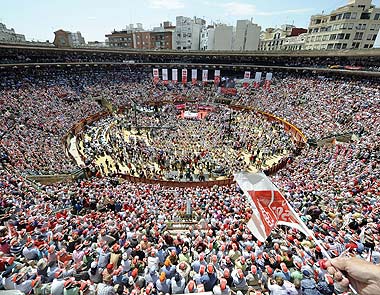(excerpt
from the GEAB 126 / Jun 2018)
 Russia has launched a movement of uncapping
production that will end this swan song named OPEC+.[1] It is already closely followed by Saudi
Arabia.[2]
The war of production has thus been reopened by a camp composed this time of
the United States, Russia and Saudi Arabia, all pursuing various objectives of
increasing market share, currency devaluation and pressure on Iran.
Russia has launched a movement of uncapping
production that will end this swan song named OPEC+.[1] It is already closely followed by Saudi
Arabia.[2]
The war of production has thus been reopened by a camp composed this time of
the United States, Russia and Saudi Arabia, all pursuing various objectives of
increasing market share, currency devaluation and pressure on Iran.
Other OPEC members who are able to do so will
soon cease their production, while the countries under sanctions (Venezuela and
Iran), mingled in crises (Libya and perhaps soon Iraq) or touching the limits
of their production capacity (Angola[3]), will suffer
losses with a cheaper barrel without the possibility of producing more barrels.
In the camp of those who welcome the ‘Opexit’ of Russia and Saudi Arabia, there
are, of course, energy-importing countries that are following the rise in their
fuel prices with concern.
That said, for the moment, the Russian and Saudi
decisions haven’t really impacted on the prices yet, even if the tone has
changed now (and widened the divergence between the WTO and Brent[4]).
There are several reasons for this. In particular:
- Given the highly volatile geopolitical context, the discord between highly strategic actors that these two Opexits indicate, suggests an increased risk of new conflicts, especially between Saudi Arabia and Iran (but not only). This will militate for an immediate (or long-term if conflicts really are triggered) price rise.[5]
- The ultra-tense geopolitical situation marking the current period freezes the production potential of very large reserves like those of Venezuela, Iran, Libya and, from now on, perhaps Iraq (to follow). In the meantime, the United States faces a problem of transport infrastructure, limiting its energy export potential.[6] For the moment, therefore, the potential for increased production lies mainly in Russia and Saudi Arabia, two countries that may not be able to compensate on their own for the freezing of so many deposits, resulting in a temporary price increase. This does not prevent us from continuing to say that the market trend is bearish.
All this shows the obsolescence of OPEC, an
organisation that is supposed to bring together the oil-exporting countries,
but does not include, for example, either Russia or the United States, while
including irreconcilable enemies (Iran, Saudi Arabia). Thus, despite the
intervention of non-OPEC member countries, it is failing to bring balance and
stability to the desired prices of both importers and exporters. However,
pending the deployment of a new model for stability in the energy supply (which
we analyse below as approaching), this new shock on one of the institutions of
the preceding world order makes it necessary to ask if there is anything solid
enough for the world to hold on to...
[2] Source: CNBC, 12/06/2018
[3] Source: OilPrice, 22/05/2018
[4] Source: ZoneBourse, 12/06/2018
[5] Source: OilPrice, 10/06/2018
[6] Source: Bloomberg, 29/05/2018












No hay comentarios:
Publicar un comentario
Se permiten solo aquellos comentarios que no sean ofensivos en su forma o su contenido, debiendo ser expresados en cualquier caso, con respeto a las personas e instituciones.